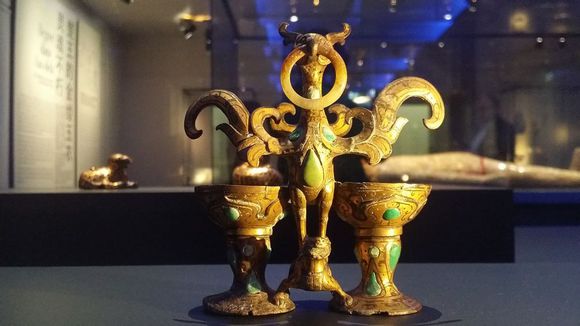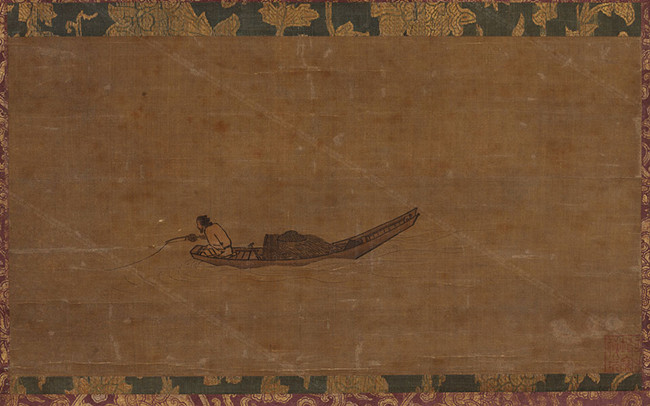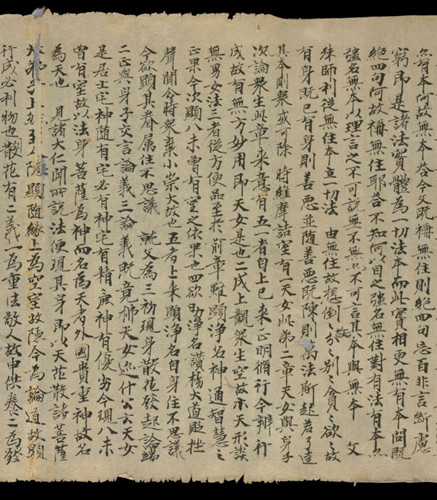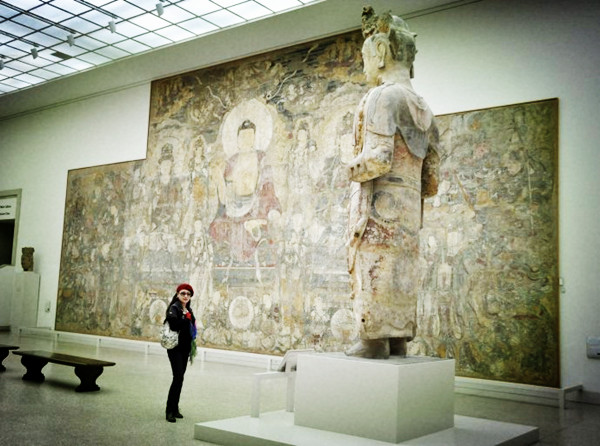A glimpse of Chinese cultural relics in foreign museums
From:China Daily NetWriter:Xu JingDate:2015-08-05
Forty-three paintings and pieces of calligraphy by Chinese painter Zhuda were on display in a recent exhibition at the Freer Gallery of Art in Washington. It was the first time in more than a decade that works by Zhuda, a famous artist whose life spanned the lateMing (1368-1644) and early Qing (1636-1912) dynasties, were exhibited.The works of art are 43 examples of Chinese cultural relics lost overseas – no one can accurately say how many have disappeared into foreign collections. But without a doubt, the number is unfathomable. Let’s take a glimpse at some Chinese treasures in the foreign museums.
Britain

[A file photo of the Chinese cultural relics in the British Museum]
There are about 130 million cultural relics from China in major museums and libraries in the UK, mostly taken illegally during the colonial period at the end of Qing Dynasty.
Among them, the British Museum keeps more than 30,000 rare treasures from China, including ancient calligraphy and paintings, ancient books, jade articles and porcelain and bronze vessels. They cover a history of 7,000 years and many are unique items, such as a Tang Dynasty (618-907) copy of Admonitions of the Court Instructress to Palace Ladies, a famous painting in the Eastern Jin Dynasty (317-420) and Visiting a Friend with Musical Instruments, a painting by famous artist Fan Kuan in Northern Song Dynasty (960-1127).
Visitors can catch sight of Chinese national treasures like bronze vessels from the Shang (1600 BC-1046 BC) and Zhou dynasties (1046 BC-249 BC), rare frescoes and documents from Dunhuang and Tang Dynasty tri-colored glazed pottery in the British Museum.
France

[File photo of Chinese cultural relics in the Guimet Museum]
More than 2.6 million Chinese cultural relics are scattered in a variety of French museums and libraries. Similar to Britain, they were mainly plundered illegally during the colonial era at the end of the 19th century.
The Louvre Museum owns more than 30,000 Chinese cultural relics. At the Guimet Museum, or the National Museum of Asian Art, half of its collections, mainly precious porcelains, are from China.
In addition, the National Library of France keeps more than 10,000 frescoes and documents from Dunhuang, including three unique Tang Dynasty rubbings.
Japan
The Louvre Museum owns more than 30,000 Chinese cultural relics. At the Guimet Museum, or the National Museum of Asian Art, half of its collections, mainly precious porcelains, are from China.
In addition, the National Library of France keeps more than 10,000 frescoes and documents from Dunhuang, including three unique Tang Dynasty rubbings.
Japan

Fishing in the Cold River Alone, a famous painting from the Southern Song Dynasty (1127-1279), is kept in the Tokyo National Museum. [File photo]
There are more than 1,000 museums in Japan that have collected almost 2 million Chinese cultural relics. Most of them were sacked from China from 1900 to 1945. According to statistics by the Japanese government after the Japanese War of Aggression Against China (1931-1945), 3.6 million Chinese cultural relics were transported to Japan.
In the Tokyo National Museum there are more than 90,000 treasures from China, including many unique historical relics such as Fishing in the Cold River Alone, a famous painting by Ma Yuan from the Southern Song Dynasty (1127-1279).
Germany

Head of a stone statue of Buddha exhibited in the Asian Art Museum in Berlin. [File Photo]
Major museums in Germany keep around 300,000 Chinese cultural relics in all. They were acquired by two ways: through looting following the military attack on Beijing with seven other countries in 1900 or by stealing from Xinjiang and surrounding provinces in the name of archaeology..
From 1902 to 1905, German archaeology teams carried back 400 boxes of historical relics to their country, including rare mural paintings and statues of the Buddha from the Bezeklik Buddhism Cave, which was built in the sixth century. However, more than half of the artifacts were destroyed during the Second World War.
Canada

[File photo of rare murals and statues of Bodhisattva in the Royal Ontario Museum, Canada]
There are about 200,000 Chinese cultural relics in Canadian museums and other institutions. In an interview with Chinese media, administrative staff at the Royal Ontario Museum said that they have 35,000 historic relics from China. Some of them were even rarer than those in Chinese museums.
Russia

Some Buddhist scriptures from Mogao Buddhism Cave in Dunhuang are now kept in the Far-East Institute of the Russian Academy of Sciences. [File photo]
Several Chinese treasures were sacked during the Siege of the International Legations by the United Kingdom, the United States, France, Russian Empire, German Empire, Kingdom of Italy, Austria-Hungary and the Empire of Japan in 1900.
However, not-so-many Chinese historic relics were ever exhibited in Russian museums. According to Chinese media, some cultural relics were sold to Western European countries by exiled aristocrats in the last century, while others were kept in research institutions.
On the list of Chinese cultural relics at the Far-East Institute of Russian Academy of Sciences in Saint Petersburg, there is a record of 12,000 documents and Buddhist scriptures from Dunhuang.
The United States

A Northern Song Dynasty copy of Ladies Preparing Silk, a famous painting by Zhang Xuan during the Tang Dynasty, is now kept in Museum of Fine Arts in Boston. [File photo]

One of the Chinese exhibition halls in the Metropolitan Museum of Art put huge ancient mural paintings and a statue of Bodhisattva on display. [File photo]
Seven museums in the United States are famous for their collections of Chinese cultural relics, including the Museum of Fine Arts in Boston, Fogg Art Museum of Harvard University, New York City Art Museum, the Penn Museum (University of Pennsylvania Museum of Archaeology and Anthropology), Freer Gallery of Art, the Metropolitan Museum of Art and Nelson-Atkins Museum of Art.
There are 10 exhibition halls for Chinese historic relics in the Museum of Fine Arts in Boston. Among them, more than 5,000 ancient paintings are at a premium. At the Penn Museum, the Six Steeds of Zhao Mausoleum, six stone carvings of the favorite steeds of the second emperor in Tang Dynasty in his own mausoleum, are the most unique and valuable on display. At the Freer Gallery of Art, half of the collections are Chinese cultural relics, including paintings, calligraphy, Buddhist art works, jade articles and bronze vessels.
Many other institutions in the United States own ancient Chinese treasures or documents. The library of the University of Chicago keeps almost 400 kinds of rare ancient Chinese books. The Columbia University library has a collection of 15,000 Chinese genealogical trees.
The majority of Chinese historic relics in the United States were obtained illegally by smuggling overseas. In the last 30 years, about 2.3 million Chinese treasures were transported to the United States. Among them, 200,000 of the choicest goods were collected by museums in the country.

